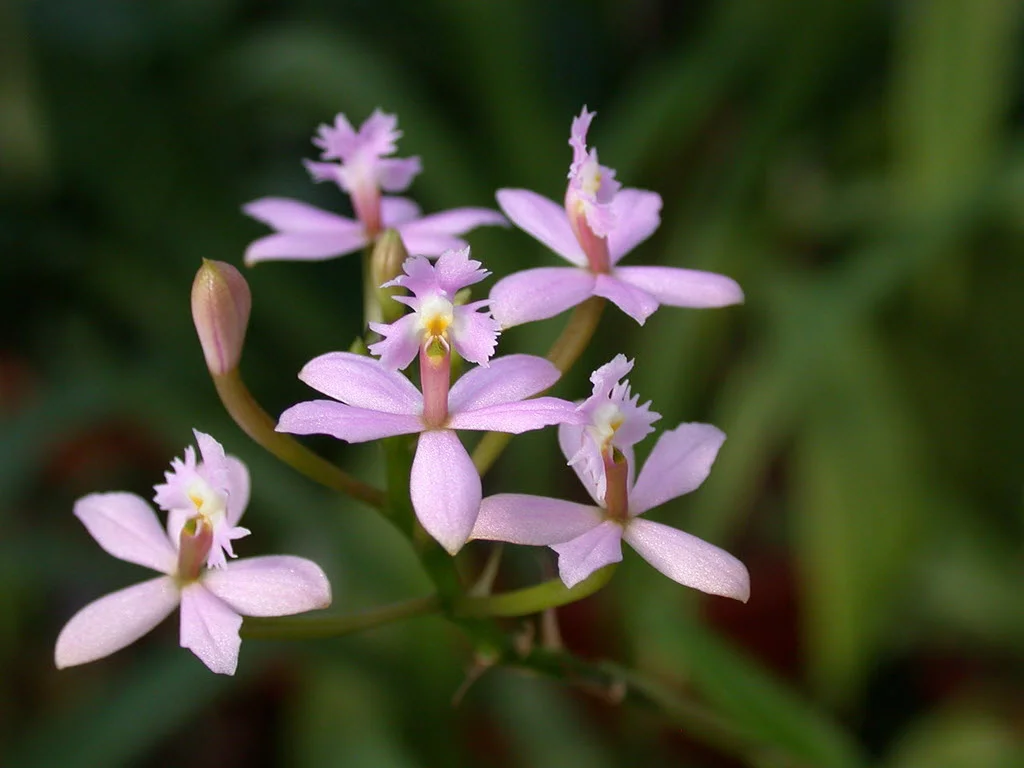Table of Contents
Pronunciation: more-MO-dez
Other Names: Goblin Orchids
Introduction
Mormodes are an orchid genus that has a particular, distinctive shape. This orchid has a very strange lip shape that usually splits into three sections and then twists back around so that the plant's column rests on the lip.
Mormodes buccinator
It produces large, showy flowers, and it has thick pseudobulbs covered by thin leaves. The flowers are bisexual, and they contain both pollen and stigma on their columns. This orchid is native to Bolivia, Brazil, and Mexico.
Temperature
As this particular orchid is native to warmer climates, it does the best when it has year-round warm temperatures. During the daytime they like temperatures ranging between 75°F and 85°F (24°C to 29°C). Nighttime temperatures can cool a few degrees for them to stay comfortable, and you should aim for temperatures between 60°F and 65°F (16°C to 18°C). These plants won't tolerate cold temperatures, and they can die very quickly if you expose them to any frost.
Light
Mormodes are flexible with the amount of light they require to grow and thrive. Although they do very well in bright light, they can also tolerate lower light and shade very well. For optimal growing conditions, you can place them in a south-facing window (if you're in the northern hemisphere).
You should note that although they like a lot of light, they don't do well in direct sunlight. So, if they're in an area that receives a lot of direct sunlight, you may want to add netting to disburse the sunlight so you plant doesn't get sunburn. If your orchid is healthy but not blooming, try increasing the amount of sunlight.
Water and Humidity
This orchid likes a lot of water, so water them liberally once a day in the morning during the growth period. You can run water from a hose until it runs out the bottom of the pot or submerge it until it stops bubbling.
When your plant drops its leaves and goes dormant in the fall, you can reduce or even stop watering it until you see new growth starting in the early spring. If you water it too much during the dormant period, the roots will rot. They like the humidity levels to stay around 70%, but they're quite forgiving.
Feeding
In the spring and summer months, while the plant is growing, feed them once a week with a diluted high-nitrogen fertilizer. You can dilute this to around one teaspoon per gallon of water, and make sure not to get it on the plant's leaves to avoid chemical burns.
When the plant drops its leaves and goes dormant, you can stop feeding it until you see new growth. If you have to feed it during this phase, only feed it once a month or so to maintain it and resume your normal feeding routine when you see new growth.
Potting
This orchid likes good air flow, and they do very well in hanging baskets. They also do well in pots, and mounted on wood. You want to use a mix of potting medium and sphagnum moss in clay pots, potting medium mixed with medium or fine fir bark in plastic pots, and potting medium with sphagnum moss for hanging baskets. If you mount your orchid on wood, add sphagnum moss to help retain water.
In nature, Mormodes like to grow on dead and rotting wood, so use that if you have it in your garden.
It is a good idea to repot your orchid every one or two years depending on how rapidly it's grown. Repot them in the spring as they're coming out of their dormant period so that they'll have the growing season to re-establish themselves.
Video
YouTuber Crazyforflowers shares with watchers her Mormodes revoluta. She says it is very fragrant, and another forumer described the scent as something being similar to Lemon Pledge.
See more orchids that smell of cinnamon, citrus, roses, and even bubblegum. You can also browse the different orchid variants so you can find new favorites.
See More Beautiful Orchids











